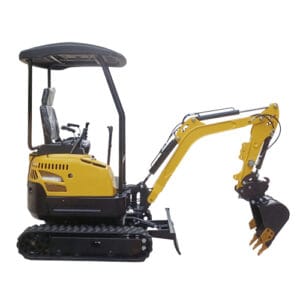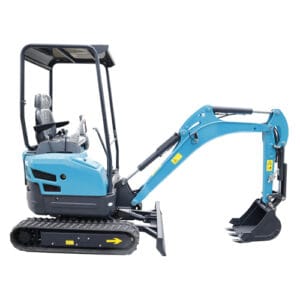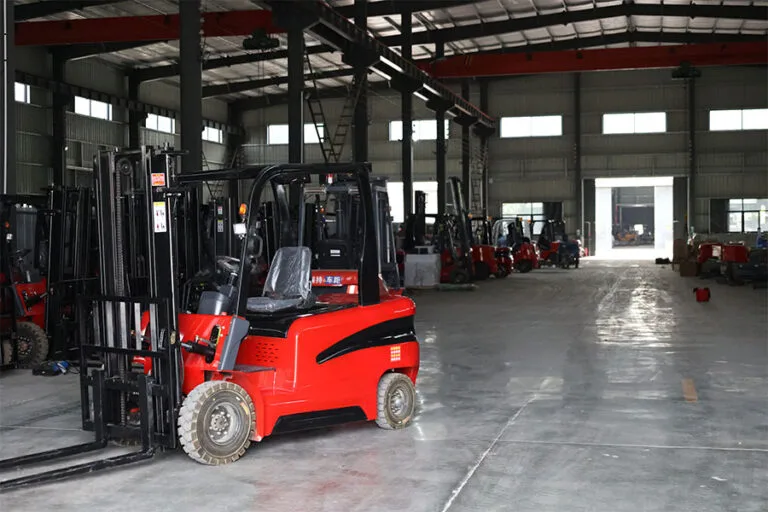Efficient Digging Starts with a Small Garden Excavator
I’m thrilled to have you here! Before we dive into the content, let’s stay connected. Join me on my social media platforms for more insights, community engagement, and regular updates. Here’s where you can find me:
📌 Facebook: Shandong Huaying International Trade Co., Ltd.
Now, let’s embark on this journey together. I hope you find the content here not only insightful and engaging but also valuable to your interests. Let’s learn, grow, and connect!
Table of Contents
Introduction

A small garden excavator is a compact digging machine tailored for use in limited or residential outdoor spaces. Unlike large industrial machines, this equipment is designed to perform delicate or small-scale operations, providing the perfect balance of power, control, and accessibility. It is especially useful for digging, leveling, trenching, and clearing areas in your garden or backyard.
Whether you’re preparing for a new patio installation or simply want to improve your yard’s layout, a small garden excavator brings mechanical muscle to your projects without compromising precision. This article will guide you through the various benefits of using one, common applications, and how it can dramatically enhance your gardening outcomes.
Advantages of Using a Small Garden Excavator
Easy Navigation in Tight Spaces
A key strength of any small garden excavator is its maneuverability in confined areas. Many residential gardens are filled with obstacles such as trees, bushes, water features, decorative fences, and narrow walkways. Larger machines would be impractical in such environments, causing damage or simply failing to access the space.
With its compact build and responsive controls, a small garden excavator can easily fit through garden gates or along tight pathways. This agility ensures that the machine can perform tasks like digging flower beds or trenching irrigation lines right next to existing structures without disturbance. For homeowners working in urban or suburban neighborhoods where space is at a premium, this feature alone makes the equipment invaluable.
Increased Project Efficiency
Time and energy are critical resources in any gardening or landscaping project. Traditional digging with hand tools is not only physically demanding but also time-consuming, especially in dense or rocky soil. A small garden excavator significantly reduces the manual effort involved. With its hydraulic arms and stable operation, you can accomplish complex digging and leveling tasks in a fraction of the time. For example, what may take an entire weekend to dig manually could be completed in just a few hours using this compact machine. Its efficiency translates into faster project timelines and less overall strain, allowing you to take on more tasks or simply finish sooner.
Multi-Purpose Functionality
Versatility is a key strength of a small garden excavator. This single machine can handle a wide range of garden and landscape duties, making it more than just a digging tool. Depending on the attachment used, it can trench for irrigation systems, lift heavy objects like rocks or sod, remove roots or stumps, or even assist in grading surfaces. For property owners looking to streamline their gardening equipment collection, this all-in-one solution eliminates the need for multiple tools. Its ability to switch roles depending on the project makes it invaluable throughout every season—from spring planting to fall clean-up.
Cost-Effective Over Time
While the initial purchase or rental cost of a small garden excavator might seem substantial, the long-term savings are considerable. By reducing the need to hire additional labor or rent several specialized tools for each project, this machine quickly proves its value. For frequent gardeners, landscapers, or those engaged in continuous property improvement, the investment pays off through improved productivity and fewer outsourced tasks. Even for seasonal users, the speed and ease of operation often justify the cost when compared to the accumulation of time, effort, and manual tool wear.
Lower Impact on Your Yard
Preserving the health and appearance of your garden is just as important as completing the task at hand. Larger machines can damage delicate surfaces by compacting soil, crushing root systems, or scraping away topsoil. A small garden excavator, on the other hand, is designed with light footprints and careful weight distribution, reducing its impact on the landscape. Its precise controls also allow for delicate handling near existing plants or features. As a result, you can perform substantial modifications without leaving your yard in disarray—ideal for maintaining both functionality and aesthetics in your outdoor space.
Common Applications of a Small Garden Excavator
Below is a helpful table showcasing typical uses for a small garden excavator and the benefits each function brings to your project:
| Task | Description | Benefits |
|---|---|---|
| Digging Garden Beds | Excavating soil to create planting spaces | Saves time, improves depth control, allows uniform bed creation |
| Trenching for Irrigation | Making narrow trenches for irrigation pipes or cables | Faster and more accurate than hand digging |
| Soil Leveling | Flattening uneven surfaces in the yard or garden | Creates a smooth base for patios, sod, or other installations |
| Stump and Root Removal | Uprooting small stumps or thick roots from previous landscaping | Reduces manual labor, prepares area for replanting |
| Small-Scale Earthmoving | Relocating topsoil, compost, gravel, or mulch across your property | Speeds up material movement and improves landscape management |
| Fence and Post Holes | Digging holes for fence posts or other small structures | Ensures uniform hole size and depth, reduces time spent on installation |
These tasks demonstrate how a small garden excavator simplifies a wide variety of common outdoor projects, helping you achieve professional results without the heavy effort.
Key Features to Look For in a Small Garden Excavator

When selecting a small garden excavator, it’s important to consider features that will impact performance and ease of use. While you may not need the capabilities of a commercial machine, a few features can make your experience smoother and more efficient.
Hydraulic Control System
A responsive hydraulic system enables precise movement and reliable digging power. It allows you to handle a variety of materials, including compacted soil, with consistency.
Adjustable Tracks
Some small garden excavators feature adjustable-width tracks, which enhance stability and allow the machine to adapt to narrow passages or uneven ground. This flexibility ensures better balance and reduced tipping risk.
Simple Operation Interface
Many models are designed with intuitive controls, so even beginners can learn to operate them quickly. A simplified dashboard or joystick-style controller contributes to a smoother learning curve.
Quick Attachment Compatibility
Being able to switch attachments—such as trenching buckets, augers, or grapples—extends the utility of the machine. Choose a model that allows tool changes without complex steps.
How a Small Garden Excavator Improves Project Outcomes

Saves Time on Large or Repetitive Tasks
Garden projects that involve significant digging or soil movement are much faster when mechanized. For example, creating multiple raised beds or trenching around your yard is far more efficient when using a small garden excavator instead of shovels and wheelbarrows.
Enhances Worksite Safety
Reducing manual labor also minimizes the physical risk to gardeners, such as strains, fatigue, or heat exhaustion. The use of machinery ensures more consistent and controlled motions, reducing accidents.
Delivers Cleaner Finishing
Because of their precision, small garden excavators often produce cleaner edges and flatter surfaces than manual digging. This improves the aesthetic and structural quality of your final garden or landscape installation.
Enables DIY Projects
With minimal training required to operate a small garden excavator, even amateur gardeners can complete complex projects. This independence eliminates the need for hired help or professional landscapers.
Conclusion
A small garden excavator provides a smart, effective solution for tackling various outdoor projects. From garden bed creation and irrigation trenching to root removal and soil leveling, it handles each task with ease, speed, and accuracy. For those managing backyard landscapes or handling DIY improvements, this equipment offers a practical balance of power and convenience.
By investing in or renting a small garden excavator, you equip yourself with the tools to transform your landscape more efficiently and confidently. Its compact size, multi-functionality, and gentle footprint on delicate areas make it a must-have for efficient gardening.
FAQ
What is a small garden excavator best used for?
It is best used for small to medium garden projects such as digging, trenching, stump removal, and leveling soil. It’s ideal for residential areas where space is limited.
Can I operate a small garden excavator without experience?
Yes, most units are designed with user-friendly controls, making them suitable for beginners. A short learning period is usually sufficient for basic operations.
How does a small garden excavator save time?
Its hydraulic power and ability to perform tasks quickly reduce manual labor significantly. Tasks that may take hours manually can be completed in minutes.
Is a small garden excavator safe for use around plants?
Yes, when operated carefully. Its precision allows you to work close to garden beds and delicate plants without causing damage.
Should I buy or rent a small garden excavator?
It depends on your needs. For occasional use, renting may be more cost-effective. If you frequently undertake landscaping projects, purchasing one could be a smart long-term investment.







